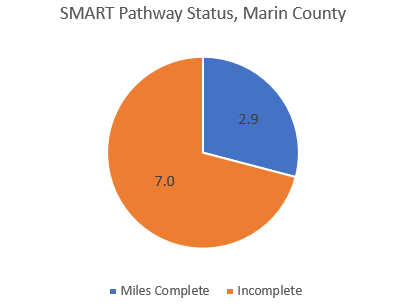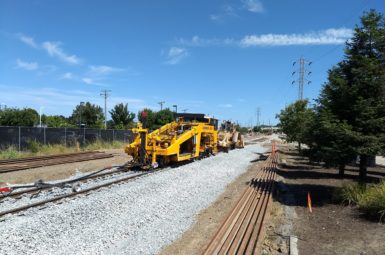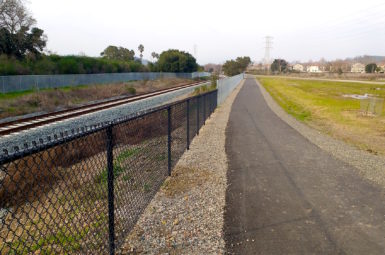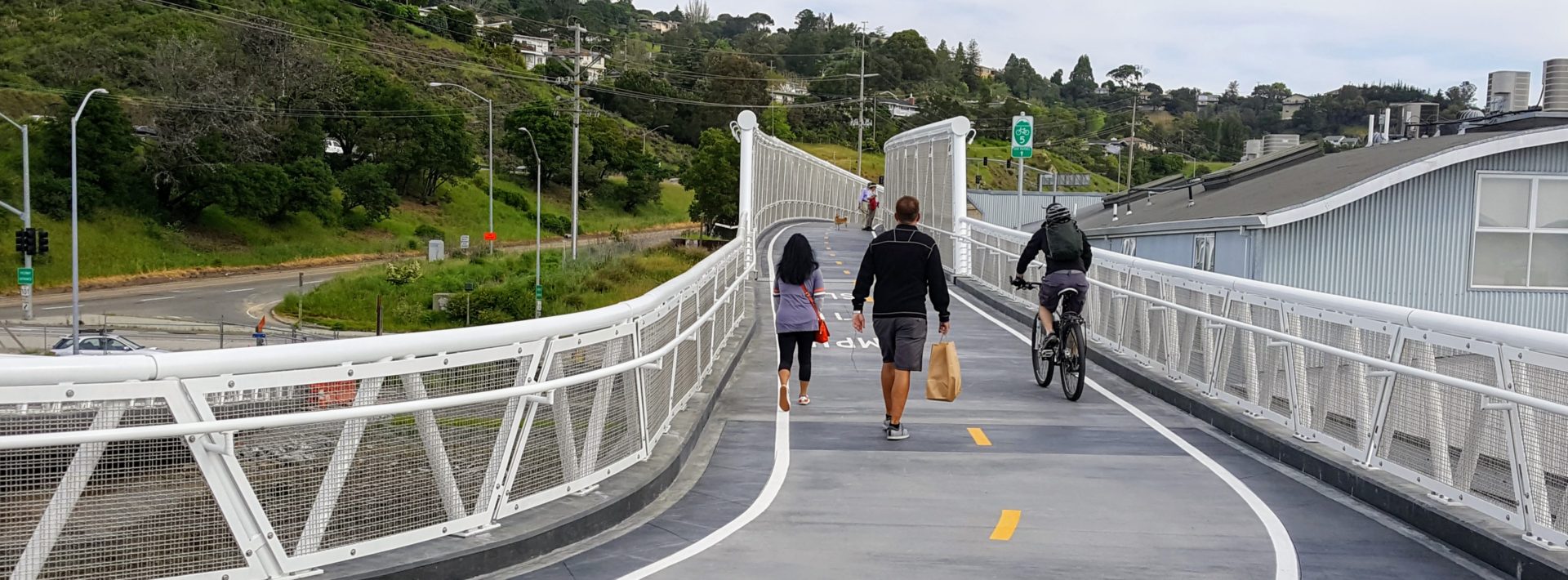news Observations, Insights From One Year of SMART Service
August marks the first year of Sonoma-Marin Area Rail Transit’s (SMART) passenger service. Our Policy & Planning Director, Bjorn Griepenburg, offers insights and observations from his year commuting by train and bike.
There’s a lot to like about having a train in the North Bay.
For starters, riders enjoy never-before-seen views of North Bay landscapes, highlighted by a series of thriving wetlands between Petaluma and Novato. Then, for those of us accustomed to commuting through the traffic-choked stretch between Sonoma County and San Rafael, whizzing by the daily vehicle standstill on 101 can be strangely gratifying. This underscores another positive – saved and reclaimed time now spent browsing the internet, relaxing, enjoying the scenery, and talking to fellow passengers instead of white-knuckling the steering wheel.
That doesn’t mean there isn’t room for improvement, however. Heading into SMART’s second year of service, I’ve made a list of changes I’d like to see:
Accommodating Bikes Onboard
Very few people live and work within walking distance of SMART stations, which makes the “first and last mile problem” a major challenge for most regular and prospective riders. Bikes are proving to be a popular tool to extend the train’s reach.
Take my commute, for instance; it takes me roughly 5 minutes to bike to the station (versus a 17 minute walk), then just 20 minutes to bike the four miles out to Fairfax. I’m not alone: SMART’s ridership figures indicate that nearly ten percent of all riders board with a bike.
While SMART demonstrated good intent by creating several spaces for bicycles on-board from the outset of service, major design flaws with the configuration have surfaced, especially during peak hours.
A common sight on the peak hour trains.
Bicycle spaces are scattered throughout the trains adjacent to fold-up “flex” seating that can accommodate seated passengers, wheelchairs, and strollers. If you’ve got a bike and someone is already occupying one of these seats, you’re out of luck. During peak hours, several problems consistently emerge:
- People with bikes have to stand awkwardly in the way of other passengers, especially if they’re unable to get a spot for their bike.
- People with bikes have to ask seated passengers in the flex seats to move seats (again, very awkward) so that they can properly store their bikes.
- When boarding, people with bikes may have to walk the length of the platform looking for open spots. This also creates a huge headache for SMART conductors, as they are constantly trying to track where space is available in order to avoid crowding and boarding delays.
- People with bikes aren’t allowed on the train.
SMART would be wise to learn from Caltrain, which uses dedicated bike cars to accommodate a similar percentage of passengers with bikes. In doing so, everyone wins: the people with bikes board faster and stay out of other passengers’ way, while conductors don’t have to track bike spaces.
A Caltrain bike car. Photo: Peninsula Press
This wouldn’t take much: SMART would simply have to clear a small area of seats at the end of one of its two and three-car sets. The flex seats could then be used as regular and ADA seating areas without conflict.
Service Gaps During Peak Hours
Yes, we’re a bicycle coalition. But, while I have the soapbox, I’m going to use it. There should be trains every half hour during peak hours. There is currently one hour-long gap in the southbound morning commute and one hour-and-a-half gap in the northbound evening commute. SMART officials say they need more trains and conductors to solve this issue; hopefully it happens sooner, rather than later.
And Then There’s The Pathway…
MCBC continues to call on SMART to begin giving the pathway the attention and urgency it deserves. We’ll have more on this to come, but for now, we’ll let this speak for itself:
So, heading into year two of SMART service (and year ten of Measure Q), I’ll offer my congratulations and gratitude to SMART…but only for the rail portion of the project.
